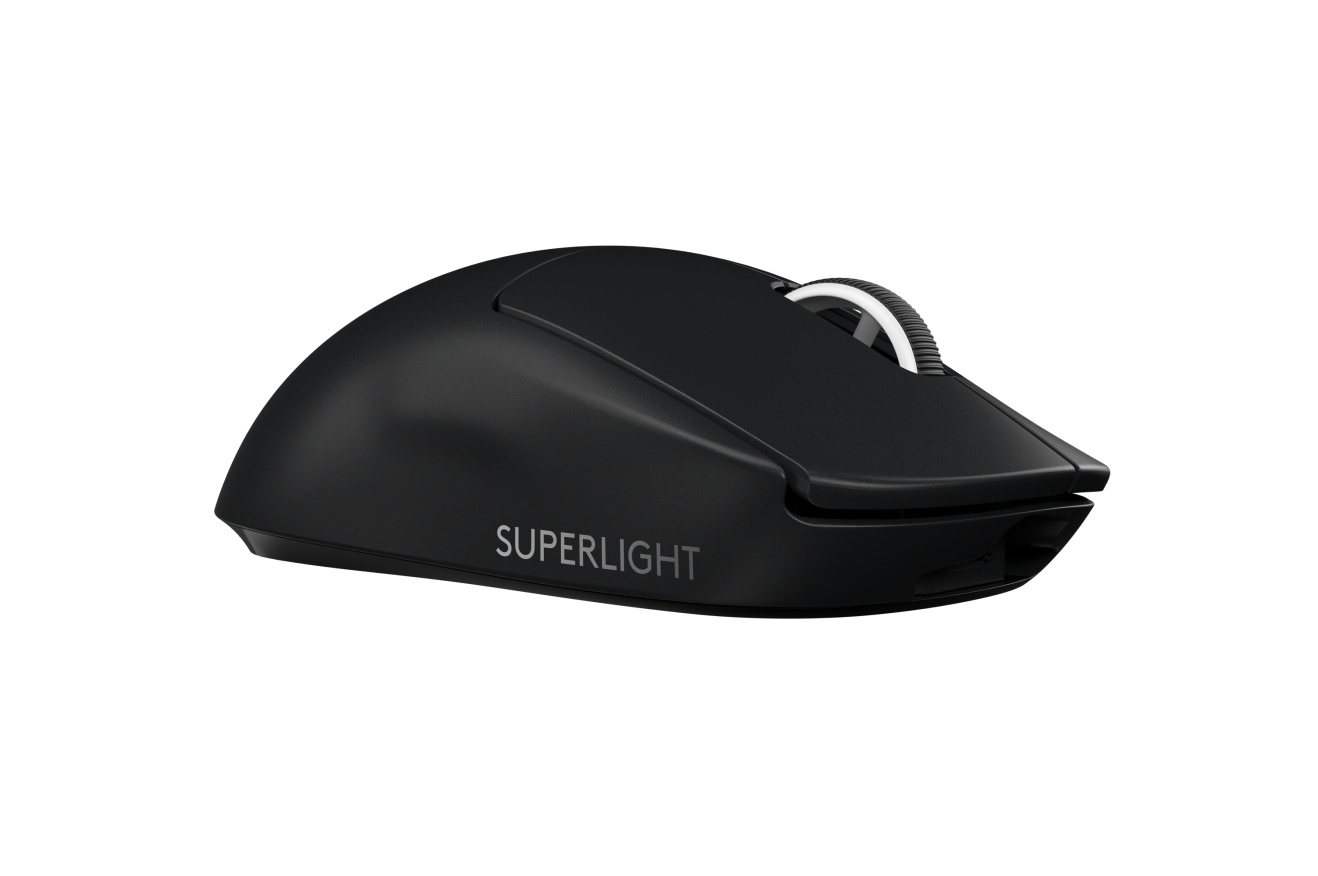Logitech G Pro X Superlight Wireless Gaming Mouse
Pro X Superlight Gaming Mouse. Features extra weight reduction design with frictionless glide, pro-grade wireless, advanced precision HERO sensor, and more
ZERØ OPPOSITION
Remove all obstacles in the way of winning with our lightest and fastest PRO mouse ever. The new weapon of choice for the world’s top esports professional athletes, it weighs less than 63 grams and delivers near frictionless glide. PRO X SUPERLIGHT continues our design philosophy of ZERØ OPPOSITION—our commitment to remove all obstacles to create the purest possible connection between the player and the game.
ZERØ MISSES
Logitech G exclusive HERO 25K sensor provides unrivaled precision, speed, and consistency. PRO X SUPERLIGHT delivers extreme accuracy and ultra fine control for complete confidence especially during the intense, split-second moments of tournament play.
ZERØ RESISTANCE
Large, zero-additive PTFE feet deliver a smooth glide for a pure, fluid connection with the game.
ZERØ CARBON
PRO X SUPERLIGHT meets the highest standards in sustainability. It’s a fully carbon neutral certified product. Our manufacturing facilities have been reduced to net zero carbon emissions through the purchase of renewable energy and carbon offsets.
Additional information
| IN THE BOX | – PRO X SUPERLIGHT Wireless Gaming Mouse |
|---|---|
| WEIGHT | <63 G (<2.2 OZ) |
| Height | 125.0 mm (4.92 in) |
| Width | 63.5 mm (2.50 in) |
| Depth | 40.0 mm (1.57 in) |
| WARRANTY | 2-Year Limited Hardware Warranty |






Reviews
There are no reviews yet.